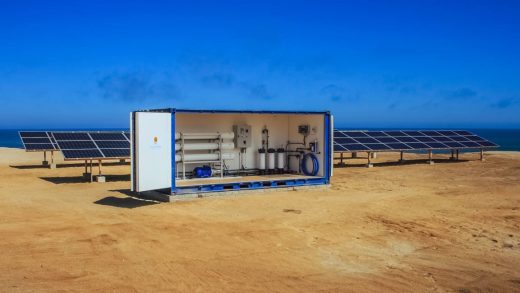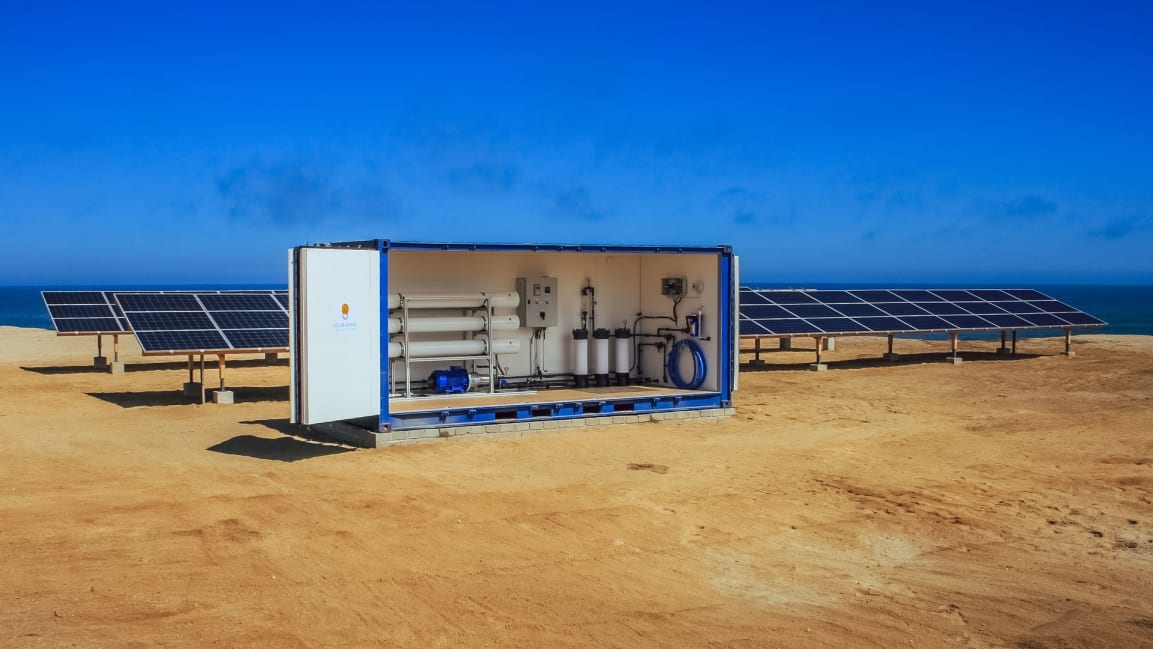This desalination device delivers cheap, clean water with just solar power
In a coastal city in Namibia, a small shipping container near the beach sits surrounded by solar panels. Inside, new technology uses that solar power to turn ocean water from the Atlantic into drinking water.
Namibia is in the middle of a prolonged drought. The president recently declared the second state of emergency in three years because the lack of rain is leading to severe food shortages. But if scaled up, this technology could help supply households and agriculture with fresh water. The basic tech that it uses for desalination, called reverse osmosis, isn’t new. But because the system can run on solar power, without the use of batteries, it avoids the large carbon footprint of a typical energy-hungry desalination plant. It’s also significantly cheaper over the lifetime of the system.
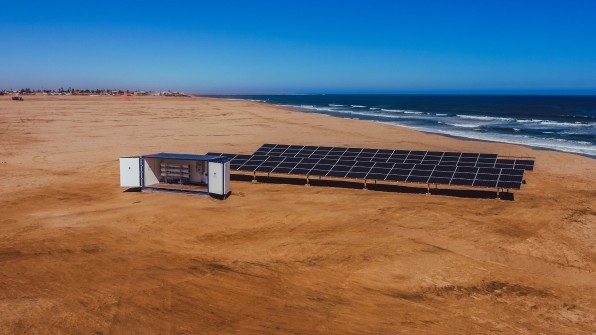
“Basically the running costs are zero, because solar is free,” says Antti Pohjola, CEO of Solar Water Solutions, the Finland-based startup that makes the technology. Desalination usually uses large amounts of electricity because reverse osmosis requires keeping water at a constant pressure. The new tech keeps water at the right pressure independently, so it can work without connecting to the grid or using a set of expensive batteries to store power.
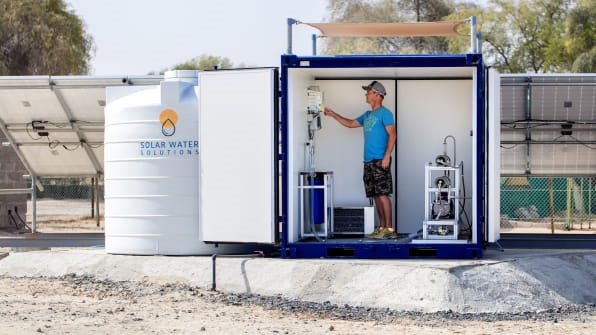
In some remote communities, especially ones on small islands, the systems could replace pricey, polluting diesel-powered desalination. Because it can eliminate the operating cost of diesel fuel, the technology can pay for itself within three to four years. “We focus on remote, off-grid areas where there is no electricity infrastructure available,” Pohjola says. The technology is also useful far from the coast; in Kenya, the company has installed systems in rural villages where groundwater used for drinking is too salty for healthy consumption. Plus, the process also filters water through a membrane that removes bacteria, viruses, and other contaminants. The devices are modular, and a smaller system can produce 3,500 liters of water an hour.
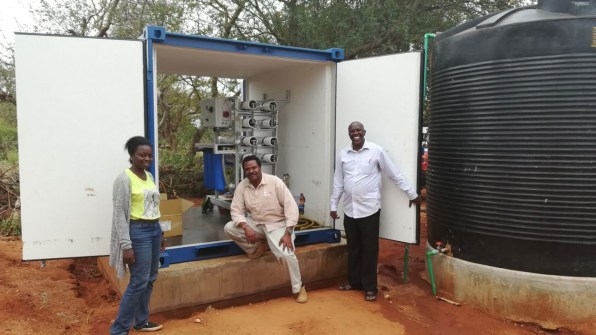
In Namibia, the first system is in place on the campus of the University of Namibia, and the water will be used in part to irrigate a new “carbon garden” of trees planted to help remove CO2 from the atmosphere. But similar systems could help address the country’s water challenges at a larger scale, and could help the country prepare for a future that’s likely to involve more drought as climate change worsens. The same could be true in other countries, with networks of small desalination plants providing water locally rather than delivering it long distances. “In Asia and Africa, not only the electricity will be made by decentralized smaller systems, but we could also make water infrastructure local through decentralized systems,” says Pohjola.
(13)

